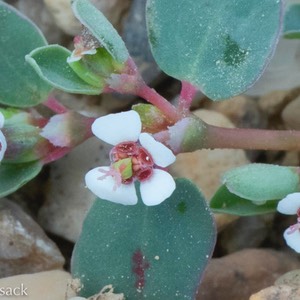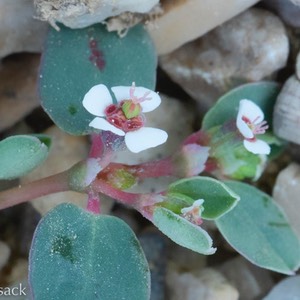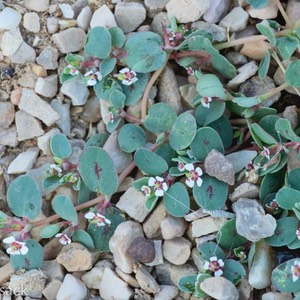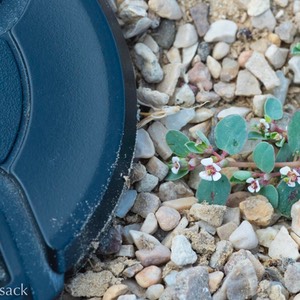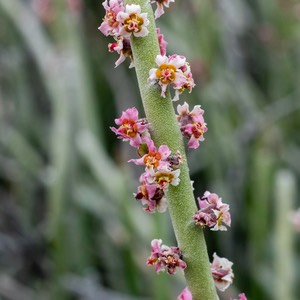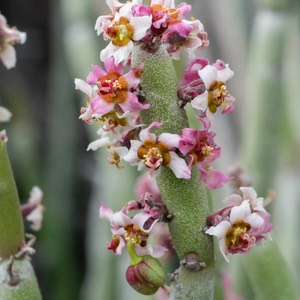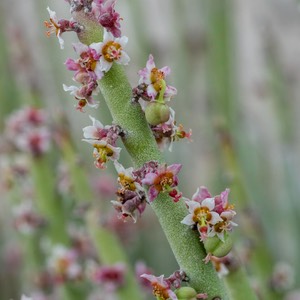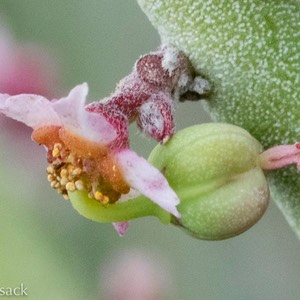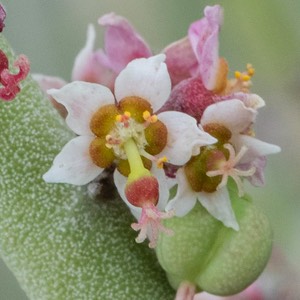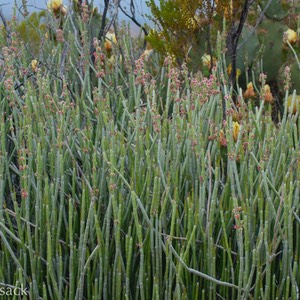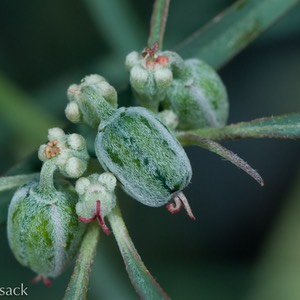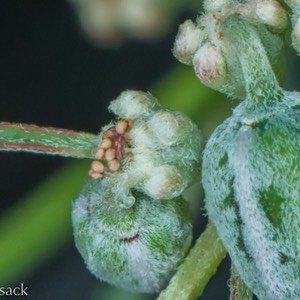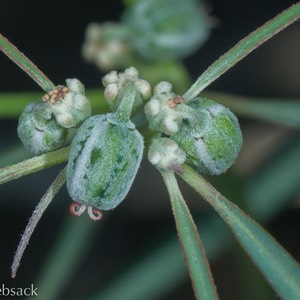Click on the images below to see larger versions.
| Scientific Name | Euphorbia albomarginata (Chamaesyce albomarginata) | USDA PLANTS Symbol |
|
| Common Name | Rattlesnake Weed, Whitemargined Sandmat | ITIS Taxonomic Serial No. |
|
| Family | Euphorbiaceae (Spurge) | SEINet Reference |
Click Here |
| Description |
Habitat: Limestone soils and poorly-drained clay soils; in open or disturbed areas in desert scrub, grasslands, mesquite woodlands. Plant: Prostrate, mat-forming perennial with stems branching from a central point and frequently rooting at nodes; stems 4 to 30 inches long. Leaves: Opposite stem leaves on very short petioles; blades orbicular to oblong, 1/8 to 1/3 inch long, entire margins often with a red blotch in the center. Inflorescence: Very small flowers with what appear to be 4 white petals; each blossom is actually a cyathium, a cup formed by white petal-like bracts which contain very small, separate male and female flowers. For a detailed description click here. Fruit: Smooth, tiny, broadly oval-shaped, ~1/16-inch long. Bloom Period: April to September. References: "Manual of the Vascular Plants of Texas" by Correll and Johnston, "Northern Chihuahuan Desert Wildflowers" by Steve West, and SEINet. |
BONAP Distribution Map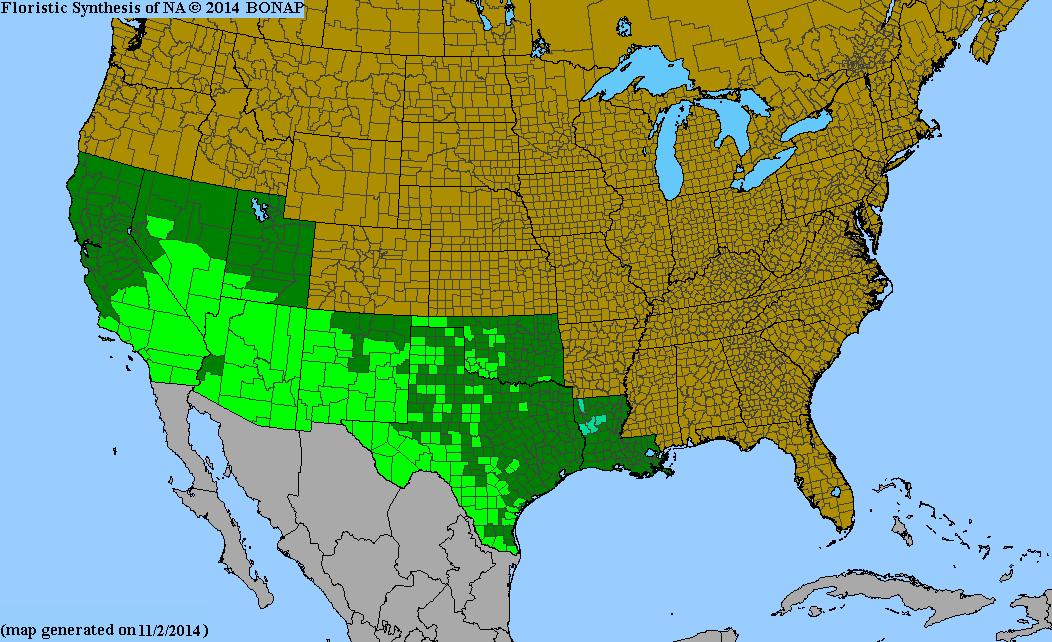
|
Texas Status: Native |
| Scientific Name | Euphorbia antisyphilitica | USDA PLANTS Symbol | EUAN3 |
| Common Name | Candelilla | ITIS Taxonomic Serial No. | 28042 |
| Family | Euphorbiaceae (Spurge) | Flora of North America Ref. | Click Here |
| Description |
Habitat: Desert environment; limestone soils in scrub ateas. Plant: Multistemmed perennial up to 24 inches tall; grayish-green, pencil-like stems covered with flaky, exfoliating layer of wax. Leaves: Alternate, very small leaves on newer growth, less than 1/8-inch long. Inflorescence: Flower-like cyathia congested along the stems, each one resembling a single flower but actually comprised of many very small yellowish male flowers that resemble stamens surrounding a female flower; petal-like appendages are white to pink and ovate or oblong in shape, less than 1/8-inch long and across. Bloom Period: Year-round with sufficient rainfall. Fruit: Smooth, green, oblong to ovoid, 1/6-inch long protruding from center of each cyanthium. References: "Wildflowers Texas Hill" by Michael Eason, "Manual of the Vascular Plants of Texas" by Correll and Johnston and Flora of North America. |
BONAP Distribution Map |
Texas Status: Native |
| Scientific Name | Euphorbia eriantha | USDA PLANTS Symbol |
|
| Common Name | Beetle Spurge, Woolly-flower Spurge | ITIS Taxonomic Serial No. |
|
| Family | Euphorbiaceae (Spurge) | SEINet Reference |
Click Here |
| Description |
Habitat: Gravely, dry, hot areas, hillsides, and canyons. Plant: Erect annual 6 to 20 inches tall tangled with many branching stems. Leaves: Very narrow, alternate, linear leaves 1 to 3 inches long. Inflorescence: Many (>25) tiny white flowers in a few hairy clusters at the ends of the branches; male (staminate) and female (pistillate) flowers are separate. Fruit: Female flower becoming a small green, hairy fruit capsule less than 1/4 inch long. Bloom Period: February to October. References: SEINet. |
BONAP Distribution Map
|
Texas Status: Native |
